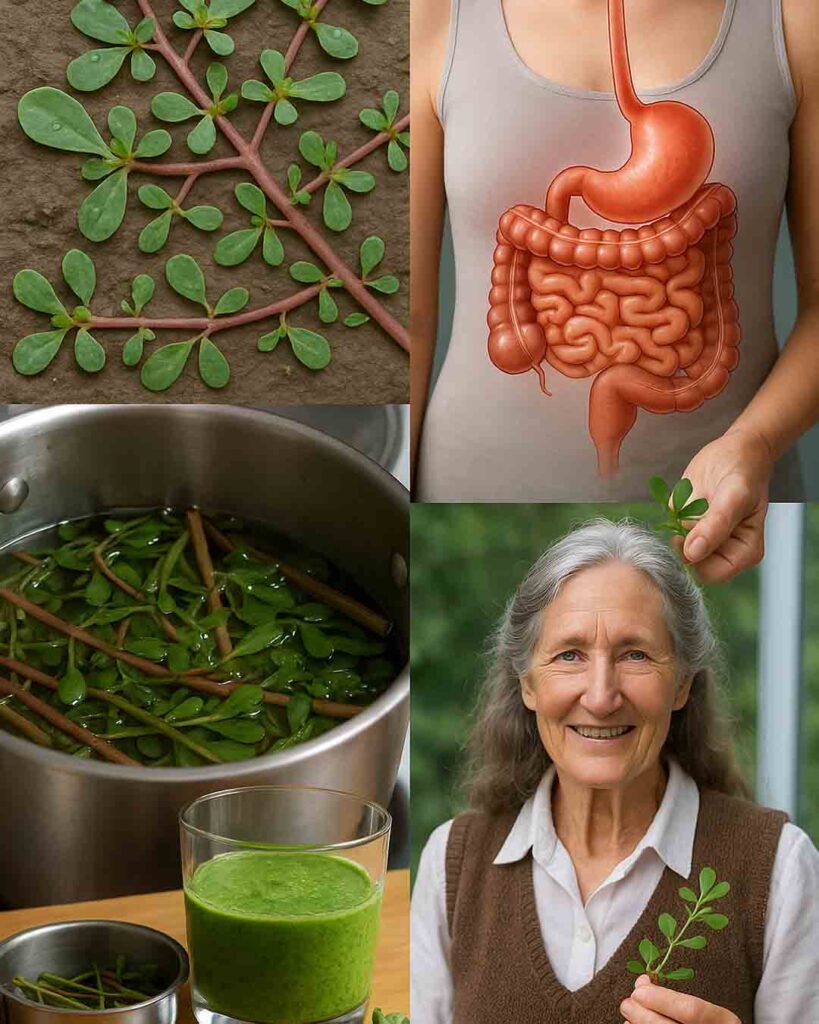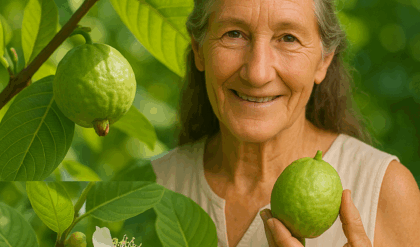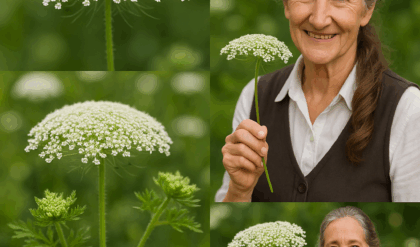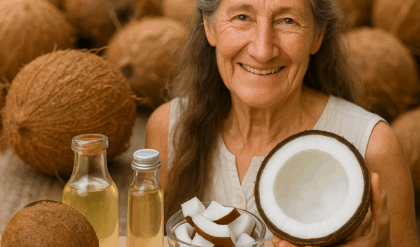If you’ve ever walked past a sprawling, succulent-leaved plant growing between sidewalk cracks or garden beds, chances are you’ve spotted purslane. Often mistaken for an ordinary weed, purslane is actually a nutritional powerhouse hiding in plain sight—and it’s delicious.
With a bright lemony tang and a crisp, slightly mucilaginous texture, purslane (Portulaca oleracea) is one of nature’s most surprising edible greens. But how do you know which parts to eat, where to find it safely, and how to prepare it to enjoy its full potential?

Here’s your complete guide to picking and enjoying purslane like a pro.
🍋 What Makes Purslane Special?
Purslane is more than just an edible weed. It’s loaded with omega-3 fatty acids (one of the richest plant sources), as well as vitamins A, C, and E, magnesium, potassium, and iron. Its succulent stems and fleshy leaves are both crunchy and hydrating, offering a refreshing experience with each bite.
The flavor? Think lemon-zest meets spinach, with a light peppery edge. It’s fantastic raw or cooked, and once you know how to handle it, it can become a staple in your summer meals.
🔎 Where to Find Purslane
Purslane grows just about everywhere—but you need to be picky about your picking spot. Look for it in:
• Untouched garden corners
• Unpaved paths or compact soil
• Sunny, dry areas near your home
• Farmers markets or organic growers who know it’s edible
🚫 Avoid: Any location that might be contaminated with pesticides, fertilizers, pet waste, or traffic pollution. Never harvest purslane near roads, public parks, or unknown urban plots unless you’re 100% sure it’s clean.
✂️ How to Harvest Purslane for Eating
Not all parts of the plant are equal. Purslane tends to grow in long, trailing clusters, but you want to focus on the youngest, most tender segments for the best taste and texture.
Here’s what to do:

✅ Target the Tips: The small, younger stems at the ends of each branch are the softest and most flavorful. Pinch off 3–4 inch lengths from the tips of the plant.
✅ Choose Smaller Leaves: These are more delicate and palatable. Older, thick leaves tend to have more mucilage and a chewier bite, which might not appeal to everyone.
✅ Skip the Thick Stems: Don’t worry about the bigger, central stems. They’re often too fibrous. You’re better off leaving them behind and picking the tiny, spoon-sized pieces that are perfect for tossing into dishes.
🧼 Washing Your Harvest
Once home, rinse the purslane thoroughly under cool running water to remove any grit or insects. Give it a quick soak in a bowl of water with a splash of vinegar to sanitize—especially if it came from the wild. Pat dry with a clean towel or spin in a salad spinner.
🍽️ Ways to Use Purslane in the Kitchen
The beauty of purslane is its adaptability. You can eat it raw, cooked, or blended—here are some of the best ways to enjoy it:
🥗 Raw in Salads
Purslane adds crunch and tang to fresh salads. Mix it with arugula, cherry tomatoes, cucumber, and a simple vinaigrette for a zesty summer bite.
🌯 Wraps and Sandwiches
Toss a handful into wraps or layer it into sandwiches for a refreshing twist. It holds its texture even under sauce or dressing.
🍲 Soups and Stir-fries
Purslane can be quickly sautéed or added to soups, especially those with tomatoes or lentils. Add it toward the end of cooking to keep its color and crunch.
🧂 As a Garnish
Use purslane to top off avocado toast, hummus bowls, or scrambled eggs. Its vibrant green and citrusy profile brighten up any dish instantly.
🫙 Fermented or Pickled
Yes, you can even pickle purslane! Its texture stands up well to vinegar brines, making it a tangy and probiotic-rich topping for tacos or rice dishes.
💡 Pro Tip: Dress It Up
Purslane holds its own under bold dressings. Think tahini-lemon, garlic-yogurt, or even balsamic glaze. Its slightly slippery texture pairs beautifully with creamy sauces or crunchy toppings like seeds and nuts.
⚠️ A Note About Texture
Purslane has a naturally mucilaginous (slightly gelatinous) texture—especially when chewed. This may take some getting used to, but it’s part of what makes it so hydrating and nutritious. If you’re sensitive to texture, start with smaller amounts and pair it with crisp or dry ingredients like cucumbers, grains, or toasted bread to balance things out.
🌱 Why You Should Try Purslane
• It’s free and grows abundantly
• It’s packed with nutrients, especially omega-3s
• It has a unique flavor profile that elevates simple meals
• It supports sustainable, foraged eating
🎯 Quick Checklist Before You Pick
✅ Is the area free of chemicals, pesticides, or animal activity?
✅ Are you harvesting from a clean, sun-drenched space?
✅ Are you choosing small, tender leaves and avoiding thick stems?
✅ Did you wash the leaves thoroughly before eating?

✨ Conclusion: Don’t Overlook This Supergreen
Purslane may not be flashy, but it’s one of the most overlooked gifts in the plant world. Whether you’re building your own backyard salad, exploring urban foraging, or simply looking to upgrade your leafy greens, purslane deserves your attention. Its lemony zip, juicy texture, and nutritional profile make it an unbeatable addition to your healthy kitchen.
So next time you spot it peeking through the cracks—don’t pull it. Pick it, clean it, and enjoy what this wild green has to offer.
🥄 Small, spoon-sized pieces. 🌿 Big nutritional rewards.
📌 Found this helpful? Share it with fellow food explorers and turn your sidewalk into your next superfood source!





